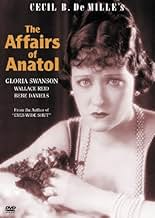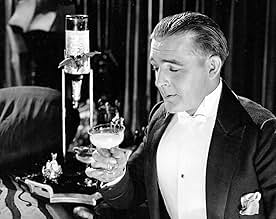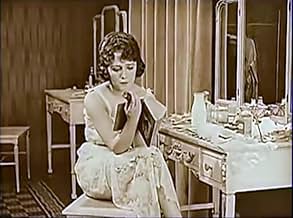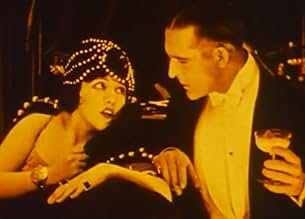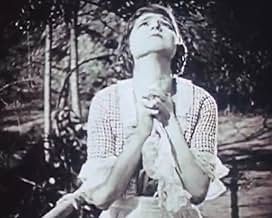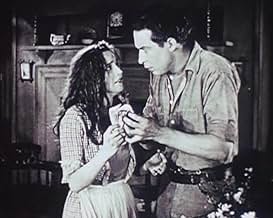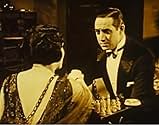IMDb-BEWERTUNG
6,6/10
1403
IHRE BEWERTUNG
Füge eine Handlung in deiner Sprache hinzuSocialite Anatol Spencer seeks a better relation than he has with his wife. He sets up the friend of his youth Emilie in an apartment and she two-times him; he comforts near-suicidal Annie a... Alles lesenSocialite Anatol Spencer seeks a better relation than he has with his wife. He sets up the friend of his youth Emilie in an apartment and she two-times him; he comforts near-suicidal Annie and she robs him.Socialite Anatol Spencer seeks a better relation than he has with his wife. He sets up the friend of his youth Emilie in an apartment and she two-times him; he comforts near-suicidal Annie and she robs him.
- Regie
- Drehbuch
- Hauptbesetzung
- Auszeichnungen
- 1 wins total
Laura Anson
- Vivian's Maid
- (Nicht genannt)
Alma Bennett
- Chorus Girl
- (Nicht genannt)
William Boyd
- Guest
- (Nicht genannt)
Shannon Day
- Chorus Girl
- (Nicht genannt)
Julia Faye
- Tibra
- (Nicht genannt)
Elinor Glyn
- Bridge Player
- (Nicht genannt)
Winter Hall
- Dr. Johnston
- (Nicht genannt)
Raymond Hatton
- Great Blatsky - Violin Teacher
- (Nicht genannt)
Fred Huntley
- Stage Manager
- (Nicht genannt)
Empfohlene Bewertungen
Cecil B. DeMille, it would appear, had a bit of a thing about ladies' feet. This may partly explain why the first glimpse we catch of Gloria Swanson in the Affairs of Anatol, is a close-up of said body part – bare, exquisitely framed, and being treated to a pedicure.
However, it was very much the DeMille way to introduce his characters in bits, summing them up by focusing us on some tiny yet significant feature. Shortly before the entrance of Miss Swanson's foot, we meet Wallace Reid's impatiently shuffling boots and tapping fingers. By doing this DeMille gives us an impression of the man before we even see his face. And throughout this picture, we can see DeMille has a kind of "inside-out" approach to shooting a scene. Cinematic convention, even back then, was generally to start with a master shot, then draw us in on the details. DeMille begins with the minutiae, then gradually reveals the bigger picture. Take the dancehall sequence where Reid meets the subject of his first affair. We first of all see Reid's view of Wanda Hawley, as if she were seated alone at the table. It is only after her character has been established that we see a shot from a little further back, showing us she is in the company of a lecherous old Theodore Roberts! DeMille's process of gradual revelation especially applies to the splendour of a set, such as the giant fan being pulled aside to reveal a stunning backdrop of stars later in the same scene.
The purpose of all this is not only to make the picture visually attractive and smoothly paced. DeMille was one of the best at this time when it came to representing the thoughts of his characters. When Reid first sets eyes on Hawley, she really is all he can see, with Roberts being an unimportant distraction. At any one time, DeMille is showing us the focus of the protagonists, without often resorting to anything so subjective as a point-of-view shot. It is a subtler equivalent to the superimpositions of imagined figures or objects that he employed in his earlier pictures. With this canny cinematic approach you'd hardly know you were seeing an adaptation of a thirty-year old stage play.
Speaking of which, the original Affairs of Anatol was a popular comedy, and the jokes in theatre productions tend to be in the words, so how to translate it to the silent screen and keep in the comedy? DeMille was no master of slapstick, and his cast were certainly no clowns. However what remains from the original is a kind of growing sense of unlikely silliness, as opportunities for adultery continually appear in Reid's path, only to be flattened by unexpected twists. The world in which the story takes place is so shallow and dignified that these daft situations – slight exaggerations of typical melodramatic plot turns – just about pass for humour.
But the fact that it works at all is largely down to the efforts of the cast. Wallace Reid goes through it all with such po-faced seriousness, and the sober and dedicated manner in which he undertakes his infidelity is actually rather funny. The highlight is surely the appearance of Agnes Ayres and Monte Blue, who act out their little slice of melodrama without even a pretence of sincerity. It is perhaps the most frivolous moment of any DeMille film, and given its place among the familiar DeMille trappings, even Ayres jumping in the river in a suicide attempt looks like a gag.
Sadly, the only cast member who does not seem quite at home here is Gloria Swanson. She is essentially an air-headed young bride, giving her errant husband an unfeasible number of chances, and frankly the role is beneath her. Here and there she gets to show her powerful dramatic presence, but she becomes a somewhat marginal figure as the titular affairs take centre stage, and her talents are largely wasted. After giving impressive turns in several of his biggest hits, this was to be the last of her collaborations with the director. It seems that in DeMille's eyes, Swanson had become little more than a beautiful pair of feet.
However, it was very much the DeMille way to introduce his characters in bits, summing them up by focusing us on some tiny yet significant feature. Shortly before the entrance of Miss Swanson's foot, we meet Wallace Reid's impatiently shuffling boots and tapping fingers. By doing this DeMille gives us an impression of the man before we even see his face. And throughout this picture, we can see DeMille has a kind of "inside-out" approach to shooting a scene. Cinematic convention, even back then, was generally to start with a master shot, then draw us in on the details. DeMille begins with the minutiae, then gradually reveals the bigger picture. Take the dancehall sequence where Reid meets the subject of his first affair. We first of all see Reid's view of Wanda Hawley, as if she were seated alone at the table. It is only after her character has been established that we see a shot from a little further back, showing us she is in the company of a lecherous old Theodore Roberts! DeMille's process of gradual revelation especially applies to the splendour of a set, such as the giant fan being pulled aside to reveal a stunning backdrop of stars later in the same scene.
The purpose of all this is not only to make the picture visually attractive and smoothly paced. DeMille was one of the best at this time when it came to representing the thoughts of his characters. When Reid first sets eyes on Hawley, she really is all he can see, with Roberts being an unimportant distraction. At any one time, DeMille is showing us the focus of the protagonists, without often resorting to anything so subjective as a point-of-view shot. It is a subtler equivalent to the superimpositions of imagined figures or objects that he employed in his earlier pictures. With this canny cinematic approach you'd hardly know you were seeing an adaptation of a thirty-year old stage play.
Speaking of which, the original Affairs of Anatol was a popular comedy, and the jokes in theatre productions tend to be in the words, so how to translate it to the silent screen and keep in the comedy? DeMille was no master of slapstick, and his cast were certainly no clowns. However what remains from the original is a kind of growing sense of unlikely silliness, as opportunities for adultery continually appear in Reid's path, only to be flattened by unexpected twists. The world in which the story takes place is so shallow and dignified that these daft situations – slight exaggerations of typical melodramatic plot turns – just about pass for humour.
But the fact that it works at all is largely down to the efforts of the cast. Wallace Reid goes through it all with such po-faced seriousness, and the sober and dedicated manner in which he undertakes his infidelity is actually rather funny. The highlight is surely the appearance of Agnes Ayres and Monte Blue, who act out their little slice of melodrama without even a pretence of sincerity. It is perhaps the most frivolous moment of any DeMille film, and given its place among the familiar DeMille trappings, even Ayres jumping in the river in a suicide attempt looks like a gag.
Sadly, the only cast member who does not seem quite at home here is Gloria Swanson. She is essentially an air-headed young bride, giving her errant husband an unfeasible number of chances, and frankly the role is beneath her. Here and there she gets to show her powerful dramatic presence, but she becomes a somewhat marginal figure as the titular affairs take centre stage, and her talents are largely wasted. After giving impressive turns in several of his biggest hits, this was to be the last of her collaborations with the director. It seems that in DeMille's eyes, Swanson had become little more than a beautiful pair of feet.
I know some may find me an oddball for this but I consider The Affairs of Anatol a masterpiece of silent cinema.
Gloria Swanson is one of my favorite actresses and she's remarkable as always in this one. But I wouldn't see Affairs for just her alone, her part is rather small compared to the ones she had in Don't Change Your Husband and Why Change Your Wife? However, even though she doesn't get as much screen time, she's still amazing and in my honest opinion, she steals every scene she's in. Her elegant wardrobe and sophisticated aura makes her the star. Wallace Reid is great too and watching him, you never would have guessed he was towards the end of his life. He seemed very strong and handsome to me, although I haven't seen him in much (sadly).
Anatol (Reid) and his wife, Vivian (Swanson) are a pretty happy married couple until Anatol starts developing the habit of wanting to rescue women with no morals from their fate. This film is long but it HAS to be to fit it all in! We travel with Anatol and Vivian through many adventures that continuously test their marriage and happiness.
The cast is absolutely fabulous! Many, many good actors and actresses here. Obviously, Gloria Swanson and Wallace Reid. Then we have delightful Bebe Daniels as Satan Synne, a vampish woman with a heart of gold deep down. Also, there's the wonderful, unique and sadly underrated Raymond Hatton who has a short appearance as a violin teacher. Pretty and talented Agnes Ayres plays a country "good girl" and the great character actor Theodore Roberts plays a mean ol' millionaire. Others in the cast worth mentioning are Monte Blue, Wanda Hawley, Elliott Dexter and Theodore Kosloff.
This movie is stunning visually and is gorgeous to look at. Beautiful tints and a score that works with the film like butter works with bread. The costumes and sets are to die for and the whole thing just screams DeMille. TCM shows this film every now and then but I wouldn't wait that long. For Gloria and DeMille fans this is a MUST.
Gloria Swanson is one of my favorite actresses and she's remarkable as always in this one. But I wouldn't see Affairs for just her alone, her part is rather small compared to the ones she had in Don't Change Your Husband and Why Change Your Wife? However, even though she doesn't get as much screen time, she's still amazing and in my honest opinion, she steals every scene she's in. Her elegant wardrobe and sophisticated aura makes her the star. Wallace Reid is great too and watching him, you never would have guessed he was towards the end of his life. He seemed very strong and handsome to me, although I haven't seen him in much (sadly).
Anatol (Reid) and his wife, Vivian (Swanson) are a pretty happy married couple until Anatol starts developing the habit of wanting to rescue women with no morals from their fate. This film is long but it HAS to be to fit it all in! We travel with Anatol and Vivian through many adventures that continuously test their marriage and happiness.
The cast is absolutely fabulous! Many, many good actors and actresses here. Obviously, Gloria Swanson and Wallace Reid. Then we have delightful Bebe Daniels as Satan Synne, a vampish woman with a heart of gold deep down. Also, there's the wonderful, unique and sadly underrated Raymond Hatton who has a short appearance as a violin teacher. Pretty and talented Agnes Ayres plays a country "good girl" and the great character actor Theodore Roberts plays a mean ol' millionaire. Others in the cast worth mentioning are Monte Blue, Wanda Hawley, Elliott Dexter and Theodore Kosloff.
This movie is stunning visually and is gorgeous to look at. Beautiful tints and a score that works with the film like butter works with bread. The costumes and sets are to die for and the whole thing just screams DeMille. TCM shows this film every now and then but I wouldn't wait that long. For Gloria and DeMille fans this is a MUST.
The plot and an analysis is elsewhere here well done with Ron Oliver's review. Suffice to say that the hand-tinted titles and the sepia-toned film itself, hinting at reds along with its browns are a real joy to behold. Seeing so many luminaries in one film is also a treat - Reid, Swanson, Moran, Daniels, Ayres.
However, the film could easily have been a half hour shorter with less wear and tear on the viewer and with virtually little loss in the morality tale or sense of the work. It's all enjoyable but it does drag a bit.
Grapevine and Kino both have excellent prints. Important for its director and his non-epic style as well as for the presence of Reid and Swanson, but far from a great or important film.
However, the film could easily have been a half hour shorter with less wear and tear on the viewer and with virtually little loss in the morality tale or sense of the work. It's all enjoyable but it does drag a bit.
Grapevine and Kino both have excellent prints. Important for its director and his non-epic style as well as for the presence of Reid and Swanson, but far from a great or important film.
This film is great fun, and often -- and I think intentionally, as in the 'Satan Synne' segment -- very funny: "an extravagant story that never by any chance could be taken seriously," as one contemporary reviewer approves. It's hard to sympathise with spoiled wife Vivian at first (a hard-edged performance by Gloria Swanson), but as the film goes on we start to realise that she does have a point.
This being a de Mille film, the costumes are of course fantastic; although it's actually not Swanson, the famous 'clothes-horse', who gets the best dresses here. Production values are elsewhere very high, as well, extending into beautifully-drawn title cards (in one case, with a live-action car actually driving across it!) and a lot of sacrificed furniture, while frankly, those jewelled flowers look almost worth losing a lover over...
But it's not all gloss and enjoyable silliness. There's some fine acting on display as well, not least from Wallace Reid as the well-meaning 'Tony' whose halo begins progressively to slip -- and, in a couple of telling little scenes, from Elliott Dexter as the overlooked best friend. (The little scene over the chessboard is a perfect illustration of the power of the silent screen: everything made explicit without a word.)
The picture's stage heritage shows up mainly in a few over-long title cards, where plot points are conveyed in one long 'speech'; at almost two hours in duration, it's also unbalanced in the direction of the first half, which could almost stand as a film on its own without its briefer 'sequels'. If Emilie is not to have a film of her own, there is perhaps a little too much time devoted to her.
But "The Affairs of Anatol" is well worth seeing -- not least, as an eye-opener for those like myself who associate C.B. de Mille with vast Biblical epics. This piece of froth and frivolity has more of the charm of a Harold Lloyd movie minus the slapstick; one can really see why 'handsome Wallace Reid' was a star; and there are just enough well-judged moments of genuine feeling among the spectacle and satire to make us care about the various minor players.
This being a de Mille film, the costumes are of course fantastic; although it's actually not Swanson, the famous 'clothes-horse', who gets the best dresses here. Production values are elsewhere very high, as well, extending into beautifully-drawn title cards (in one case, with a live-action car actually driving across it!) and a lot of sacrificed furniture, while frankly, those jewelled flowers look almost worth losing a lover over...
But it's not all gloss and enjoyable silliness. There's some fine acting on display as well, not least from Wallace Reid as the well-meaning 'Tony' whose halo begins progressively to slip -- and, in a couple of telling little scenes, from Elliott Dexter as the overlooked best friend. (The little scene over the chessboard is a perfect illustration of the power of the silent screen: everything made explicit without a word.)
The picture's stage heritage shows up mainly in a few over-long title cards, where plot points are conveyed in one long 'speech'; at almost two hours in duration, it's also unbalanced in the direction of the first half, which could almost stand as a film on its own without its briefer 'sequels'. If Emilie is not to have a film of her own, there is perhaps a little too much time devoted to her.
But "The Affairs of Anatol" is well worth seeing -- not least, as an eye-opener for those like myself who associate C.B. de Mille with vast Biblical epics. This piece of froth and frivolity has more of the charm of a Harold Lloyd movie minus the slapstick; one can really see why 'handsome Wallace Reid' was a star; and there are just enough well-judged moments of genuine feeling among the spectacle and satire to make us care about the various minor players.
Drawn to this by the irresistable and rare chance of seeing Wallace Reid and Gloria Swanson working together on a film, I had heard about it through reference books (and also about Swanson's recollections of the film not being happy due to feeling uncomfortable with Reid at the time), and expected exactly what I got - a fun piece with some nice touches (Gloria's playful mood before she feels slighted by Wanda Hawley's flapper girl; Reid trashing Hawley's apartment when he realises she did not have pure intentions towards him after all; Agnes Ayres and Reid sharing a kiss in the woods while Gloria has gone to fetch a doctor to attend to Ayres, 'half-drowned' when she left; and best of all, Bebe Daniels as the absurdly named Satan Synne who is really a domesticated pussy cat chasing young men for cash to help her sick husband). The Affairs ... also benefits from having a lovely series of colour tints throughout. A little overlong perhaps (and too much focus on Hawley at the expense of the other girls encountered by Tony) but another fascinating early piece from De Mille. Sad to think that Wallace Reid would be dead by early '23. The movies' loss.
Wusstest du schon
- WissenswertesGloria Swanson admitted in an interview decades later that Wallace Reid's drug addiction scared her while they were making this film, and she avoided socializing with him because of it.
- PatzerIn the flashback sequence where Emilie is on a swing and two mirrors are set up to give repeated reflections of the action, the cameraman bending over his camera is visible a few times when the swing moves out of the way.
- Zitate
Anatol Spencer: Let's not kiss any more, dear, until after breakfast.
- Alternative VersionenFilm Preservation Associates copyrighted a version in 1999 with a music score compiled and performed by Brian Benison. It was produced for video by David Shepard and ran 117 minutes.
- VerbindungenEdited into Don't Tell Everything (1921)
Top-Auswahl
Melde dich zum Bewerten an und greife auf die Watchlist für personalisierte Empfehlungen zu.
Details
- Laufzeit1 Stunde 57 Minuten
- Sound-Mix
- Seitenverhältnis
- 1.33 : 1
Zu dieser Seite beitragen
Bearbeitung vorschlagen oder fehlenden Inhalt hinzufügen

Oberste Lücke
By what name was The Affairs of Anatol (1921) officially released in Canada in English?
Antwort
